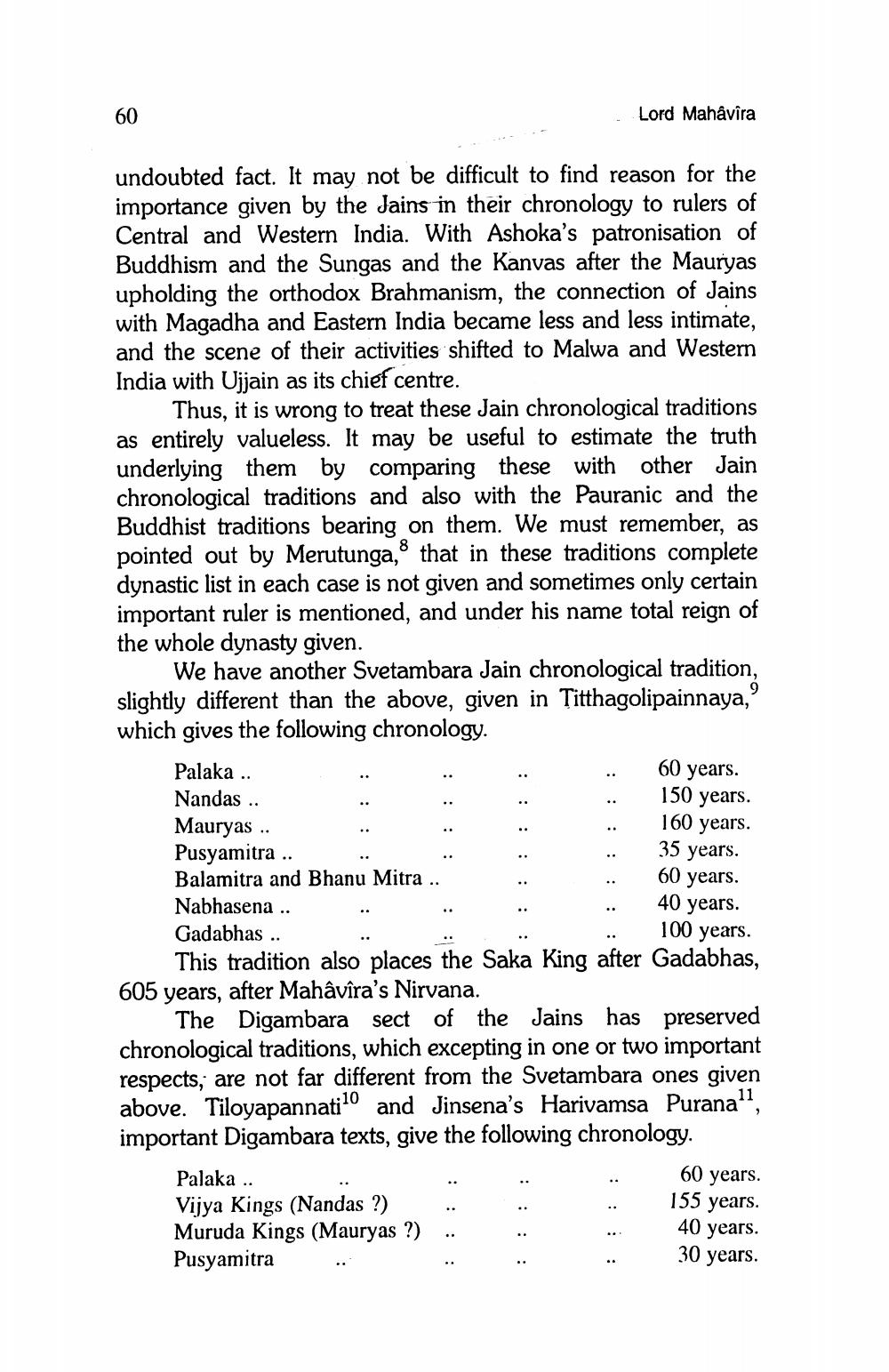________________
60
Lord Mahavira
undoubted fact. It may not be difficult to find reason for the importance given by the Jains in their chronology to rulers of Central and Western India. With Ashoka's patronisation of Buddhism and the Sungas and the Kanvas after the Mauryas upholding the orthodox Brahmanism, the connection of Jains with Magadha and Eastern India became less and less intimate, and the scene of their activities shifted to Malwa and Western India with Ujjain as its chief centre.
Thus, it is wrong to treat these Jain chronological traditions as entirely valueless. It may be useful to estimate the truth underlying them by comparing these with other Jain chronological traditions and also with the Pauranic and the Buddhist traditions bearing on them. We must remember, as pointed out by Merutunga, that in these traditions complete dynastic list in each case is not given and sometimes only certain important ruler is mentioned, and under his name total reign of the whole dynasty given.
We have another Svetambara Jain chronological tradition, slightly different than the above, given in Titthagolipainnaya, which gives the following chronology. Palaka ...
60 years. Nandas ..
150 years. Mauryas ..
160 years. Pusyamitra ..
35 years. Balamitra and Bhanu Mitra
60 years. Nabhasena ..
40 years. Gadabhas ..
... 100 years. This tradition also places the Saka King after Gadabhas, 605 years, after Mahâvîra's Nirvana.
The Digambara sect of the Jains has preserved chronological traditions, which excepting in one or two important respects, are not far different from the Svetambara ones given above. Tiloyapannatilo and Jinsena's Harivamsa Purana", important Digambara texts, give the following chronology. Palaka ..
60 years. Vijya Kings (Nandas ?) ..
155 years. Muruda Kings (Mauryas ?) ..
40 years. Pusyamitra
30 years.




